The Graph Of The Day
It doesn't appear the Uvalde TX police were underfunded
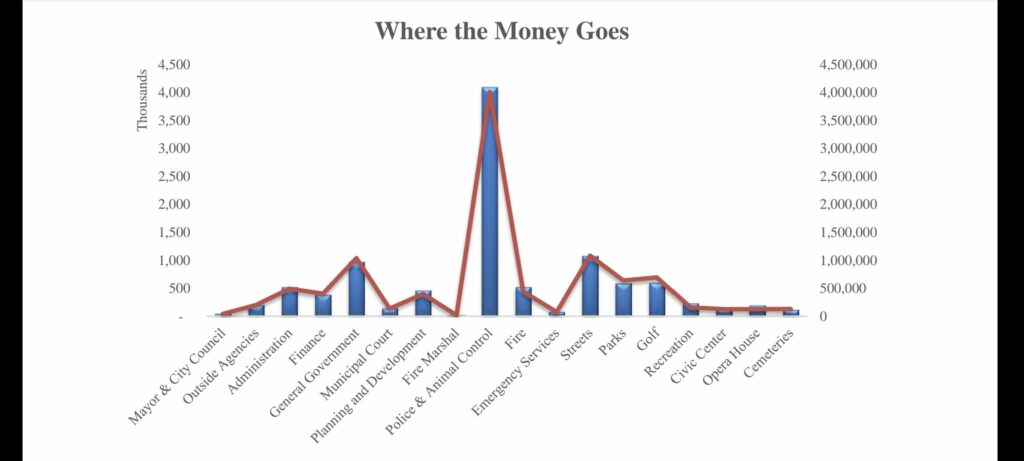
Slowly, more information is beginning to trickle out about the police response to the school shooting in Uvalde Texas. We are not going to know exact details for quite a while–if ever. However, a number of troubling details are already emerging. The following is from today’s Washington Post:
Authorities agree that the gunman was dead by 1 p.m. but have offered conflicting accounts as to whether the attack began around 11:30 a.m. or closer to noon. By 11:43 a.m., the school announced on Facebook that it was under lockdown, citing gunshots in the area. “The students and staff are safe in the building,” it said.
In public transmissions on a radio channel used by local EMS workers, someone said at 11:53 a.m. that a lieutenant had requested a response to the area of the school. As the response was discussed, one official was heard telling first responders: “Please, just stay back.”
The side entrance to the school should have been locked, but it was unclear whether it was or if Ramos forced it open.
Two Uvalde police officers then showed up, Considine said, and tried to get inside, exchanging more gunfire with Ramos. Both officers were wounded, he said. The attacker then went to a fourth-grade classroom, where he barricaded himself in and “does most, if not all, of his damage.” A Border Patrol team responded to the scene, as did other law enforcement officials, who “were breaking windows and getting kids out,” Considine said.
By 12:10 p.m., a Facebook live stream recorded out the front of the school showed that police cars had established a perimeter, helicopters were flying overhead and onlookers had gathered. Seven minutes later, school authorities announced on social media there was “an active shooter at Robb Elementary.”
Shots were still being heard at 12:52 p.m., according to radio recordings. “Do not attempt to get closer,” a voice warned on the EMS channel.
After hearing gunfire, authorities said, a tactical team formed a “stack” formation and eventually breached the classroom door and killed Ramos in a shootout. Ramos was in the room for some time before police officers entered, and it was unclear whether he killed the students when he first barricaded himself inside or just before the police breached the room.
https://www.washingtonpost.com/nation/2022/05/25/reconstruction-timeline-uvalde-school-shooting/
The timeline makes it clear that there was a significant period of time in which police had surrounded the building while the gunman was inside. This backs up what the State Public Safety Department has previously shared:
Department of Public Safety Director Steve McCraw told reporters that 40 minutes to an hour elapsed from when Ramos opened fire on the school security officer to when the tactical team shot him, though a department spokesman said later that they could not give a solid estimate of how long the gunman was in the school or when he was killed.
“The bottom line is law enforcement was there,” McCraw said. “They did engage immediately. They did contain (Ramos) in the classroom.”
https://apnews.com/article/uvalde-texas-school-shooting-44a7cfb990feaa6ffe482483df6e4683
Note that Director McCraw failed to note that also contained in said classroom were two teachers and a full class of children, many of whom were killed or wounded during said containment.
We also have evidence that during that time, at least part of the local police force was concentrating on crowd control and, in some cases, physically restraining people from attempting to enter the school. Some videos of that control have also surfaced on Twitter:
Further complicating things, late last night Radley Balko, amplified a bit of social media detective work conducted by Dr Steven Thrasher of Northwestern University. Dr. Thrasher had found a 2020 entry on the Uvalde Police Department page showing off the small city’s SWAT team.
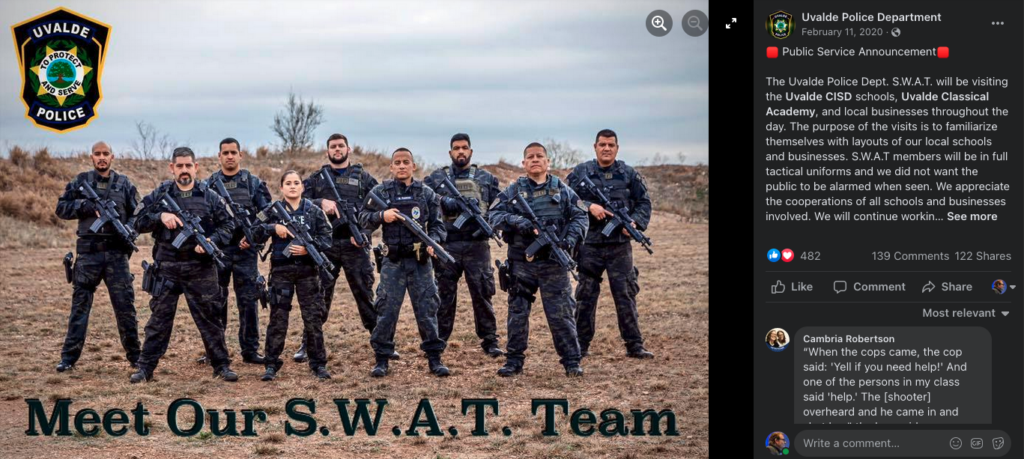
The caption that went with it is particularly of note:
The Uvalde Police Dept. S.W.A.T. will be visiting the Uvalde CISD schools, Uvalde Classical Academy, and local businesses throughout the day. The purpose of the visits is to familiarize themselves with layouts of our local schools and businesses. S.W.A.T members will be in full tactical uniforms and we did not want the public to be alarmed when seen. We appreciate the cooperations of all schools and businesses involved. We will continue working together to make Uvalde the safest place to live.
https://www.facebook.com/uvaldepd/photos/a.984027511630606/2986614501371887/?_rdr
Unless this unit was disbanded in the last two years, it appears that this small city had a tactical team that had literally trained to deal with this situation.
This brings us to the chart of the day, courtesy of the always-excellent Dan Sinker (of punk rock publishing, “Mayor Emanuel“, and rethinking journalism fame):

For context, Uvalde is a city of approximately 16,000 people. The police budget accounts for more than half of the city’s overall budget.
Yesterday, I posted as to why calls for more police in schools wouldn’t solve this problem (and would most likely worsen other social issues). Today, I post this to highlight why calls to better fund the police wouldn’t solve this either. By all these accounts, there wasn’t a lack of police funding or resources in Uvalde.
If anything, we should be asking what was the return on investment that the city received on that already substantial investment in a moment when things like the SWAT team were actually needed. And we should ask the same thing of our local law enforcement as well. Perhaps even more importantly, we should ask what might happen if some of that funding was transferred over to other areas like health and human services.
That said, this isn’t to say that Uvalde isn’t seeing some ROI on this investmetment. It’s just in for-profit-policing as opposed to public safety. The police department is the 4rd largest source of local government revenue (just edged out by “golf” for the number 3 slot).
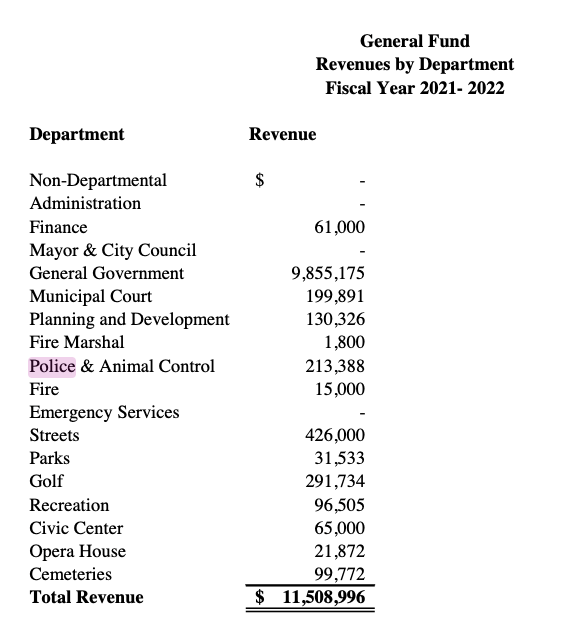


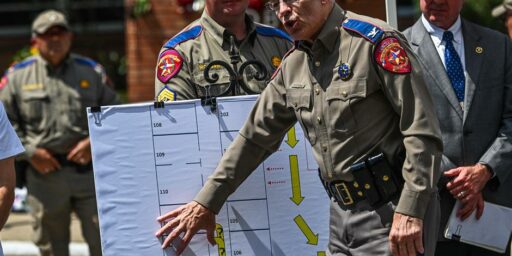
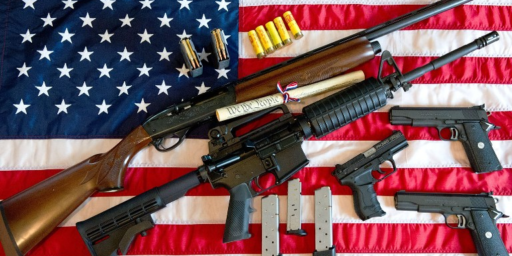
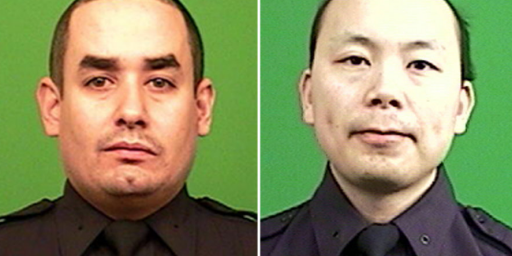

Thanx Matt, this is much appreciated.
eta: the graph doesn’t exactly agree with the Fiscal Year 2021-22 table. What am I missing?
While not an exact comparison, the Public Safety (Police, Fire, etc.) segment is about 66% of San Antonio’s $1.36B General Fund. And has been for years. Doesn’t really seem out of line.
https://www.sanantonio.gov/Budget/Current-Budget
100%
I think, Matt, you are more pointing to the limits of what police can in general accomplish, rather than defects with the Uvalde departments response. Do I have that right? Because that’s my take.
I don’t know that rushing in, or allowing parents to rush in, would have resulted in a better outcome. But I’m sure lots of parents think so.
Ok, I know this isn’t the full story, but the words here … as a parent, are making me physically sick. The helplessness of the kids inside, the parents outside … dammit.
@Jay L Gischer: @Franklin: On Wednesday morning’s Open Forum, I posted:
And it is now coming out.
So we have a gaggle of LARPing LEO gööns all waiting for someone to point them towards a goal while ignoring every lesson learned in 20 years since Columbine that states that officers need to engage the attacker ASAP, regardless of reinforcements.
If the cops are scared of the firepower any random 18yo can bring to bear, why aren’t we seeing their union reps on FOX ripping the heads off of the spokes-models and accusing them of hating police through inaction and propaganda in service of corporate gun profits and political expediency?
Nvm
@OzarkHillbilly: The graph is budgeted expenditures, the table is income.
That this tiny little town had a nine person SWAT team is ridiculous. All of these little for profit cop fiefdoms should either be consolidated into a county, regional, or state force or heavily regulated. Somehow forced to become more professional.
Well, it seems that we see a continuation of fantasies about guns in some of these critiques. Fantasies that we stop gun violence with more guns, better guns, more aggressive use of guns. By allowing civilians with no intel to run into an active shooter situation.
Yes, it’s a horrifying situation. There are only bad choices, there aren’t any good ones. You have to go for the less bad ones.
Here are some choices I endorse:
1. Falling back after an initial exchange of fire demonstrated inffectiveness due to body armor. A simple assault is going to produce nothing but more dead people, many of whom are civilians.
2. Holding once he’s barricaded. This is a terrible situation, because of the teachers and children in that room, but it’s probably less terrible than what might happen in an assault that isn’t sufficiently, uh, staffed and organized.
3. Evacuating people from the non-barricaded room. Apparently this included children of officers on the scene. But of course you want to clear the school before you try anything, why wouldn’t you?
Everything I’ve read is ambiguous in terms of what facts are reported. There are sharply different interpretations of those facts available.
Situations like this provoke strong feelings of helplessness. The police are not responsible for that, the shooter is.
It is shocking, I think, for people of our time to confront situations where the whole society appears helpless. The usual human response is to double down, to do whatever they already thought was the answer even more. To try harder, whether that’s more police, more open carry, or more gun bans.
It’s my opinion, though, that we need to think differently. To try something else, to keep trying until we can figure out a better way to stop people from doing this.
And instead of universal healthcare and sensible gun controls, Republicans want more police in all 130,000 schools. Pfft! Useless!
@Jay L Gischer:
This is true as far as it goes. But also responsible are the politicians (95% Republicans) and lobbyists who insisted that setting up a school and police force exactly like Uvalde, with the on site officers and the SWAT team and controlled entrances was the only possible way to protect children and any other method would be useless or worse.
@OzarkHillbilly:
@gVOR08 was correct. I’ve updated the post to make the graph more clear.
@Jay L Gischer:
Partially yes. This is an incredibly difficult situation. I am also pointing to a desire to respond to this by saying the police need more resources or funding as an answer to this situation (in particular the presence of a SWAT team that is supposed to be specifically trained to handle these situation–note that according to initial reports it appears to have been Border Patrol who finally breached the room–Update: see Scott’s post below or this article which he linked to on why and how the Border Partol became involved).
I also wanted to point out the role of police in modern Aerica is also often more for revenue generation than public safety.
I agree that allowing parents to rush in isn’t a good idea. That said, my understanding is that since Columbine, police response has focused on entering the building and confronting the shooter ASAP. That said, I am clearly not an expert in situations like these.
To be fair, that money doesn’t all go to the cops. It’s police AND animal control.
@Matt Bernius: For those questioning (like I did) why Border Patrol was there, here is a good summary:
Bottom Line: They live there.
Border Patrol Agents Killed the Uvalde School Shooter. But Why Were They on the Scene?
@Scott:
Thank you so much for that link. That’s super helpful context for something I’ve been wondering about and didn’t have time to research.
@wr:
And probably a not insignificant part of the income probably does come from AC related fees (i.e. adoption), fines, and potentially grants.
I haven’t had a chance to read the budget in detail. I occasionally have to do real work.
@Matt Bernius: You shame me, sir, by giving a serious response to my bit of fluff!
Some of the reports coming out about the police incompetence are jaw-dropping. I am hoping that many of these reports are either exaggerated or missing context, because if they aren’t, heads need to (figuratively) roll.
I mean…there’s this.
And this.
@Jay L Gischer:
The shooter didn’t have body armor. There were no plates in his vest, so it was empty, useless, pretend body armor.
The 18 year old may have been better equipped or trained than the local police, as he did fight off two initially, but it wasn’t body armor that made the difference.
@wr:
LOL. I saw the “/s” written at the end of that statement. This just happens to be one of those weird little topics I know more than a bit about because I volunteered with the Rochester Animal Shelter (run by animal control) for years.
I’ll try to find an opportunity to make some offhanded comment about police procedural shows that you can tee off on sometime in the near future so we can be even.
Tragedy upon tragedy:
Husband of slain teacher dies ‘of grief,’ family confirms
Apparently of a heart attack.
@Jay L Gischer:
I appreciate a lot of the issues that are raised here. I think this also should lead us to ask how much of what we spend on police is really about security theater versus having a tangible impact on public safety.
Additionally, there is a secondary question about how much of our investment in the police is actually about raising money off of the very people and communities that they are theoretically sworn to protect.
It is difficult to argue for reallocation of policing funds to other departments or even to outside groups.
It is the right thing to do and would be more efficient and produce better outcomes, but bad actors characterize it as “Defund The Police” and campaign on it as if you were a commie weirdo.
It’s likely the town’s SWAT got there, but also likely the Border Feds team got there first. The Border patrol has a significant percentage of their line cops trained as tactical teams. It’s the nature of their business, having to deal with cartels and all. Probably 2/3rds of the town’s team was off-duty.
It’s not surprising is that a podunk’s “SWAT” team would defer to all but certainly much more extensively trained and equipped Feds in such a situation, and the leader of the Border Patrol team would place the officers he knows from training at the pointy end.
@Jen: I have several questions revolving around the basic plan of the school. Looks like a 60s/70s school design. Multiple buildings. Single story, maybe once had jalousied windows.
I heard that the shooter jumped the fence and entered into a side door. If it is like my wife’s school, then the grounds are locked, the front entrance is locked. However, several of the individual buildings will have unlocked doors because students are always moving around between the gym, cafeteria, library, and their classrooms. I understand that.
But why wait for a key if the windows on the ground floor? I don’t know. It will all come out.
@Scott: You are right, of course. And much of the initial information will end up being wrong (apparently, there was NOT a school resource officer on scene, despite multiple reports that there was).
I appreciate the fact that the police are being thrown under the bus.
It’s definitely a distraction from the underlying problem (too many guns in too many hands), but it’s a nice change of pace from the usual copaganda. By the time this is done, I expect the Republican establishment will have gone full Madison Cawthorn on these cops, personally destroying each and every one of them. Will they go after the pensions? We can hope!
Guns cannot fail, they can only be failed.
If a good guy with a gun cannot stop an active shooter, then by definition that guy wasn’t good, badge or not.
——
I’m not defending the cops here, but all the training you do for a roughly once in a lifetime event (and the odds of a school shooting in a given district are low enough that it is a once in a lifetime event for the cops) is a complete crap shoot. Will you remember it? Will you follow it? Is it even a good idea in this specific instance?
If the effects of mass shootings start hurting the police themselves, maybe police unions will be more inclined to stop supporting the policies that make mass shooting happen.
(I would also support police needing to carry liability insurance for unlawful use of force. The unions can offer it. To borrow a Republican phrasing, they need to have some skin in the game)
This is perhaps tangential and maybe dumb, but why are they paying for a SWAT team when they could potentially rely on the BORTAC teams to do the same stuff? Better and free. It’s not like they’d refuse. “Hey Johnny Fed, you wanna raid this “stash house” with us?” Like they’d say no.
I also don’t know how these people look at an expense like the SWAT team and not freak out about all the extra taxes. It’s not like all the funding is coming from elsewhere. Now, I could maybe understand this if a couple municipalities got together and decided one would get the SWAT, one would spend money on the fire dept. and so on and the lend them out as needed.
Like, I can get why Chicago would need something like that, but why does a place smaller than a university need it?
@Scott:
Sorry Scott, I missed this earlier. Two thoughts–first they break out fire separately, but adding it in would most likely keep us in the 66% area.
Second, and more important point, is that I think we should question the degree to which spending 66% of a local budget on police is good for the community. That’s why I ultimately land on the question of ROI. Is a community getting a commensurate return on public safety for that investment?
For example, does a community of 16,000 really need to invest in a SWAT team, especially if when push comes to shove in a SWAT scenario they are going to differ to the more qualified Border Patrol?
And also how much of that investment is really about enabling the police to be a revenue-generating agency for a municipality?
@Beth:
It’s possible that the SWAT is being funded by the $213K revenue generated by the police. Which is a sneaky form of taxation, typically disproportionately raised off of the most vulnerable community members or via things like civil asset forfiture.
@Beth:
Border proximity, is my guess.
@Matt Bernius: “LOL. I saw the “/s” written at the end of that statement. ”
I actually never use the /s. If I don’t think people are going to get my meaning, I rewrite or delete. My writer’s pride won’t let me cheat!
@Beth: “Like, I can get why Chicago would need something like that, but why does a place smaller than a university need it?”
Because small town mayors and police chiefs aren’t allowed to use city funds to build statues to themselves. This is the next best thing.
@Matt Bernius:
Hidden taxes infuriate me. The gymnastics (and racism) of it drive me nuts. Plus the work that goes into hiding things begets people hiding other things. Government built on lies ends up just not working.
@Jen:
I get that, but with BORTAC a quick call away, you’d think you’d let them handle it. And any heat if something went bad. Like now, BORTAC seems like heroes and I’m sure most of what they do is garden variety racisms and reprehensible. The local cops come out of this looking like cowards and idiots.
@wr:
That makes a lot of sense. Sad, but understandable.
@Gustopher:
Not a total distraction. Now maybe we can start having a serious discussion about wastimg money on useless, incompetent keystone cops instead of investing in mental health services. Hopefully sans the scary and dumb Defund sloganeering.
@OzarkHillbilly: The graph shows expenses, the table shows revenues.
@Beth:
Everything I’ve read suggests that’s just what they did. “Quick call” means different things in different places, and for different purposes. The Uvalde Border Patrol station provide traffic checks and rail car inspections. How far for the people with body armor, appropriate weapons, and proper training? One of the ongoing health care issues we are trying to deal with here in Colorado is that for a very large part of the state — by area — an ambulance is at least 40 minutes away. And if the weather is bad, perhaps hours.
I’m late to the party on this one, but a couple years ago I had the opportunity to shadow the Dane County Sheriff department when they were doing “active shooter training”, and got to talk to the training officers involved.
Dane County (home to Madison, our capital) has a population of just of half a million, and a Sheriff’s department of just over 600. Every single member of the force is required to participate in a 4-part active shooter training every year. The final part is a full-on “paint ball” scenario where there are “live” rounds being fired on both sides.
What the officers in Uvalde did was exactly what they should have been trained NOT to do.
Here’s the full article.
@gVOR08: Thanx.
It’s worth noting here that the school district there has its own discrete police department, and that department, not the city department, was in control of the situation on the ground.
@HarvardLaw92:
Can you link to a source on that? I’m curious. What I’ve seen reported is that there was confusion about which jurisdiction was in command between the locals and the feds. I haven’t seen anything about the School’s department as a separate entity from the city department.